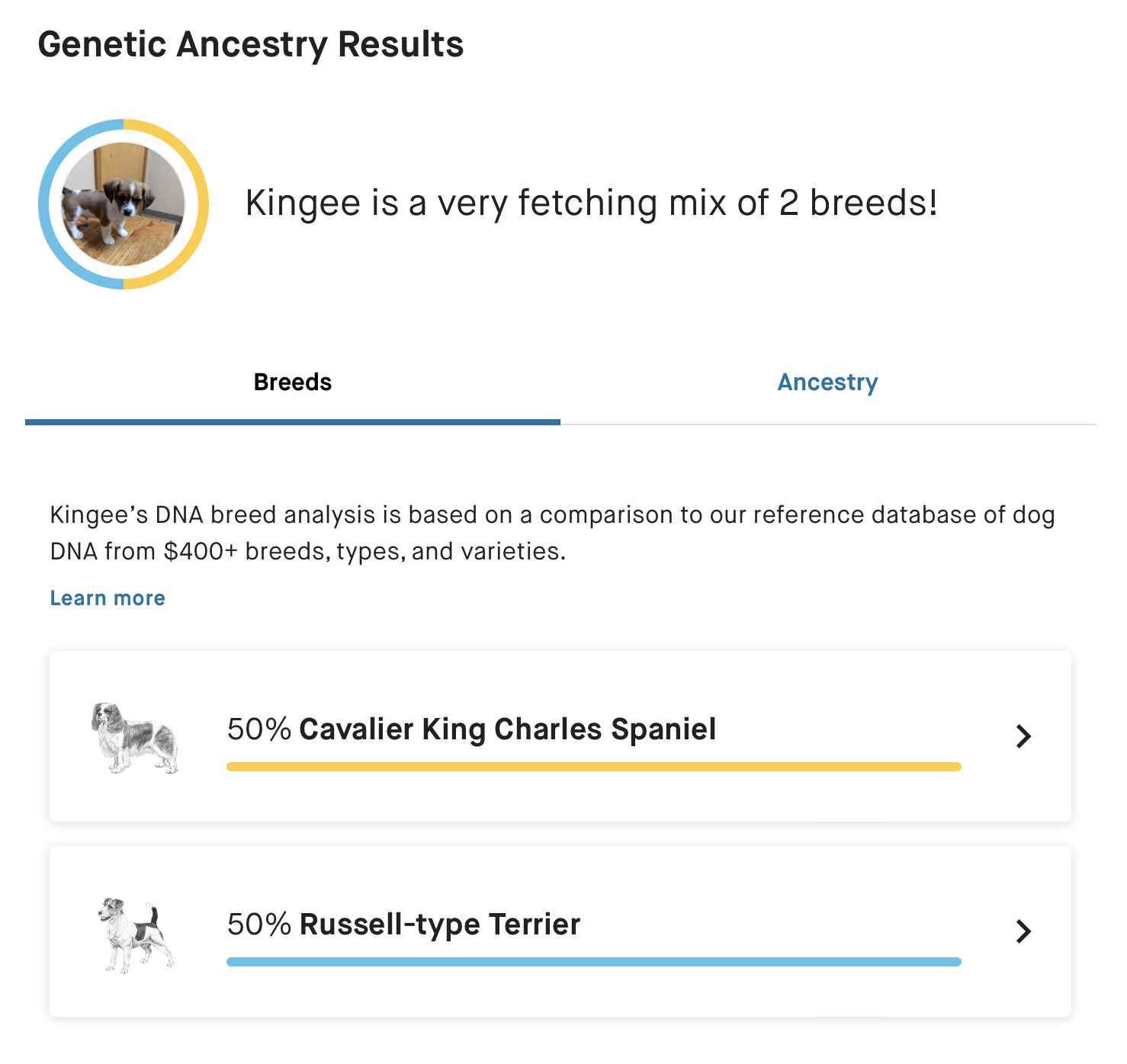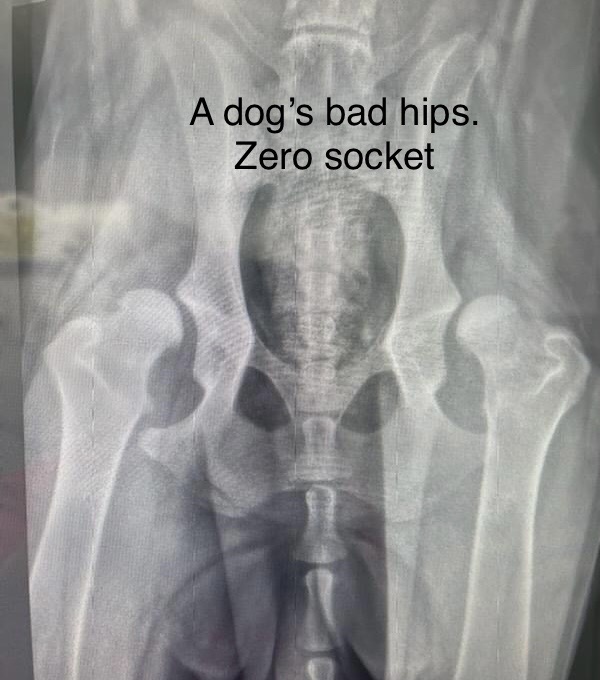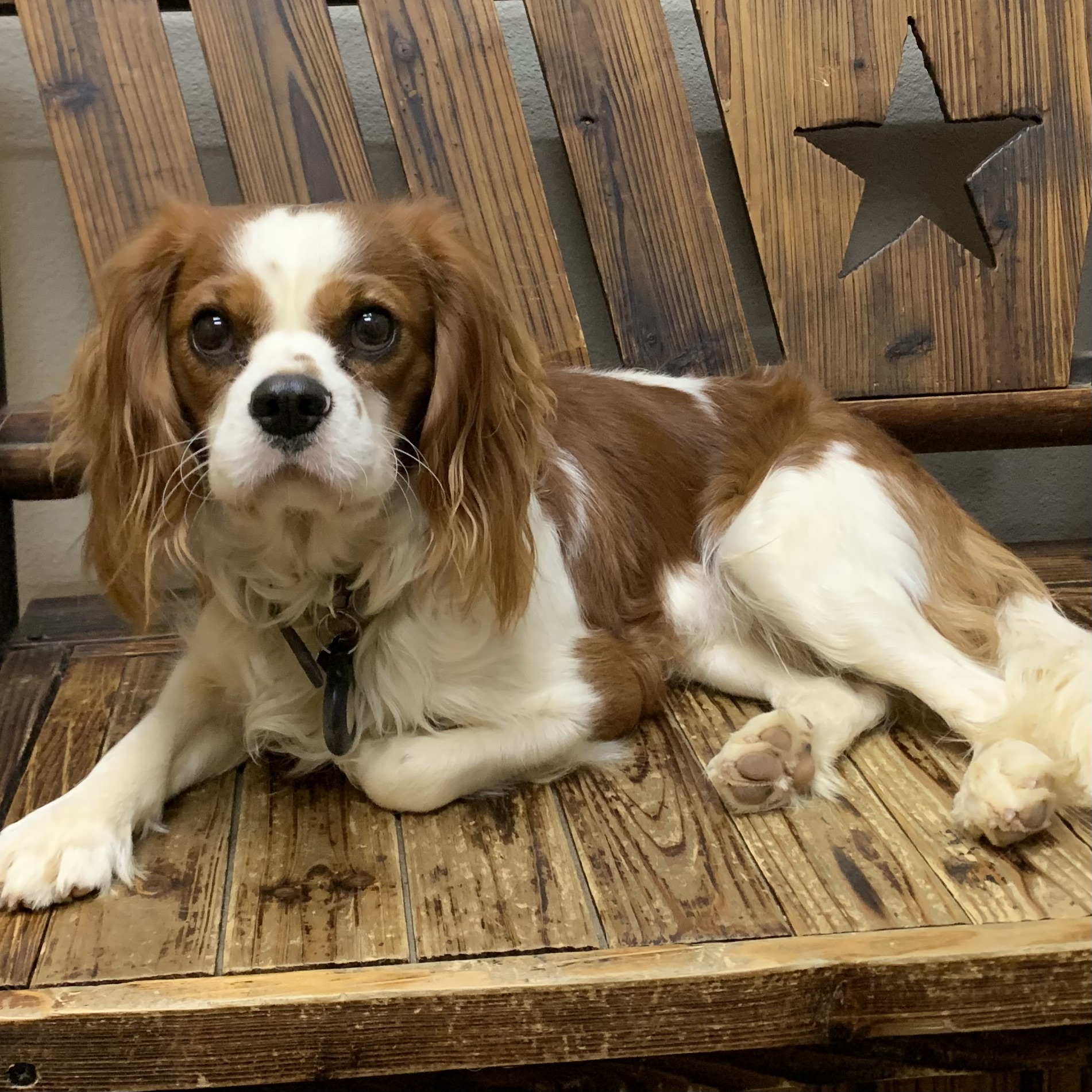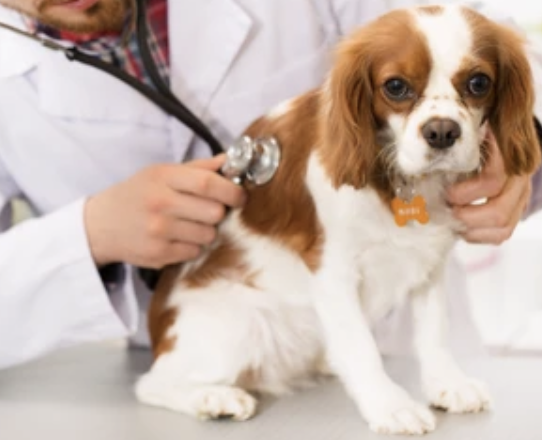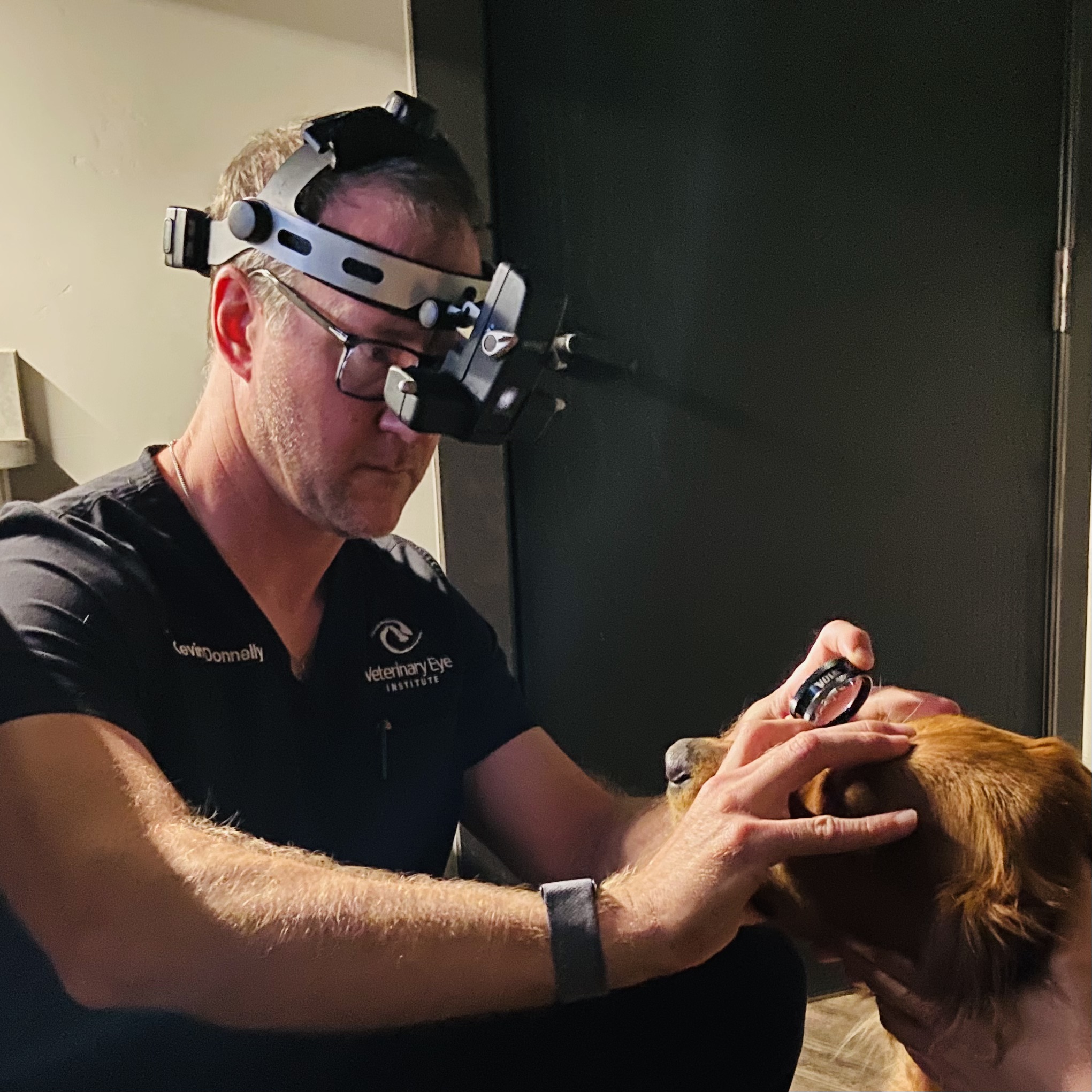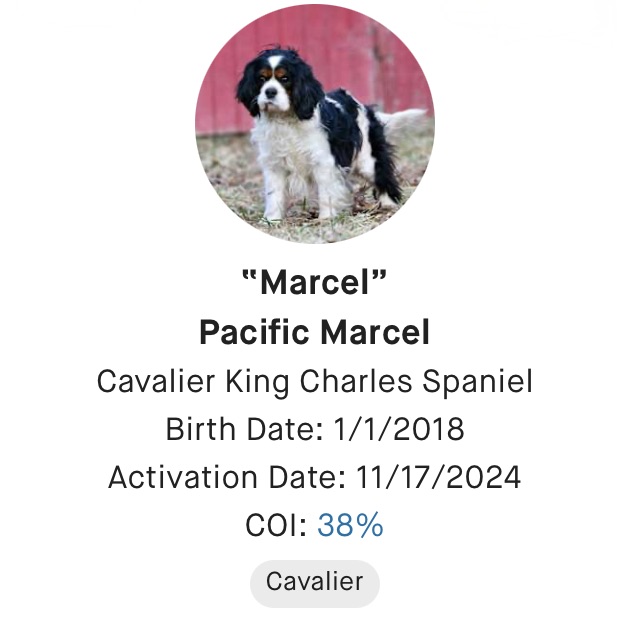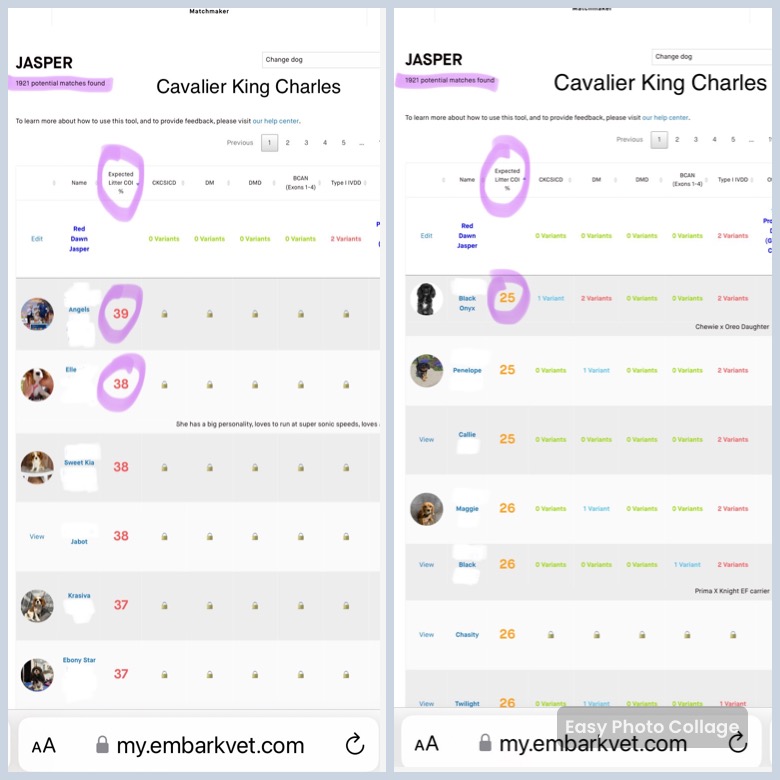Screening for Cavaliers prior to Breeding
Hips
Breeding dogs need an X-ray of the hips after 24 months of age to screen for hip dysplasia. Unfortunatly, too high of a percentage of Cavaliers have hip dysplasia as 16% of dogs submited to OFA fail. The x-ray is sent to radiologists to recieve a grading or score. Common scoring systems are OFA, BVA, PennHip.
Learn about Hip Dysplasia in Cavaliers
Patella
Any veterinarian can exam of the patellas, the back knees, for loose or slipped knees. Loose patellas are common in small dogs , but can be screened and bred away from. As a breed, patella problems are the least of the concern for Cavaliers. A general practice vet can check the patellas and submit the findings to OFA.
Learn about Patellas in Cavaliers
Heart
All Cavaliers need regular cardiac screening for MVD, Mitral Valve Disease, the prevalent heart condition. Ideally a Cardiologist checks the heart by Echocardiogram. A Cardiologist veterinarian or any veterinarian can confirm if the dog has later stage MVD by listening to the heart, called an Ausciltation. But, Cavaliers can pass an Auscilitaion but not pass an Echo due to early onset of mild MVD. The majority of Cavaliers show MVD by 5 years of age. MVD is the leading cause of early death in Cavaliers.
Learn about Mitral Valve Disese in Cavaliers
Eyes
An opthalmologist should inspect the eyes of Cavaliers used for breeding. OFA records show 1000 dogs submitted each year in 2022, 2023, 2024. The most common catagories of conditions are:
8.2-9.8% DYSTROPHY-EPITHELIAL/ STROMAL
10% DISTICHIASIS
1.6-4.2% CATARACT-SIGNIFICANCE UNKNOWN
Learn about Eye Problems in Cavaliers
DNA
DNA disease testing gives data to breed away from common mendelian inherited conditions. DNA testing now gives us genetic inbreeding data, physical traits and analyst of breed types. DNA can aide in better choices in pairings of animals. The majority of DNA tests are Autosomal Recessive, meaning to be affected the individual must gain 1 copy from each parent, meaning the 2 copies are the same. A smaller percentage of disease testing finds genes who are Dominant, where only 1 copy from one parent causes the offspring to be ‘affected’. These are the 2 main categories of DNA tests for traits and diseases.
Learn about DNA Testing in Cavaliers
Inbreeding
Today we can DNA test a dog and know his inbreeding percentage. This technology has revolutionized understanding of dogs. Also, two dogs can be analyzed together to know the offspring’s potential inbreeding. This new science is easily utilized with Embark Genetics Genome-wide COI. Simply DNA test your dog at Embark to know your dog’s COI. Then later use their MatchMaker Tool and Pair Predictor tool to see what inbreeding the potential matches offer for offspring. Inbreeding calculation is called COI, Coefficient Of Inbreeding. All Cavaliers DNA tested in every study, are over 25% COI with the majority at 35-40% COI
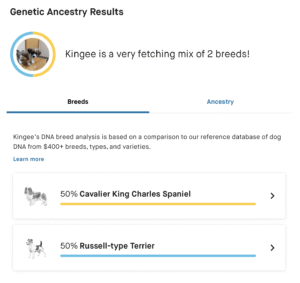
Breed ID
Breed type identification is an insightful tool. Multiple companies can look at a dog’s DNA and list the genetic breed makeup. This tool is especially useful for knowing percentages of breeds in a dog for a cross-breed program. For the purpose of our Cavalier Improvement Project, we will use this tool to attempt to keep the genetic blend of Cavalier approximately 50% of the offsprings genes. We also want to keep the other 50% a huge variety of breeds to aide in diversity.
Embark’s Breed ID, plus more
Wisdom Panel Breed ID, plus more
Embark's MatchMaker Tool
Embark’s Matchmaker Tool can suggest low or high COI pairing for a breeding dog. This is a valuable tool to know if a potential match is a good pairing choice. Gone are the days of looking at a written pedigree to decide if the potential parents are too closely related. DNA now tells us actual inbreeding of our dogs and their potential offspring.
Detrimental Health Conditions in Cavaliers
IVDD/CDDY
Cavaliers are “fixed” for 2 copies of IVDD /CDDY, meaning over 99% of Cavaliers have 2 copies according to scientific literature from DNA testing. There is no way to breed away from the disease in a closed population of only Cavaliers.
IVDD, or Intervertebral Disc Disease, is a condition where the cushioning discs between the vertebrae in a dog’s spine either degenerate or rupture, leading to spinal cord compression and potential nerve damage.
Having the genes for IVDD / CDDY does not promise the dog will experience pain and degeneration, but the risk of it is greatly increased.
Cavaliers should be paired with “other breeds” that do not have any IVDD / CDDY genes. This means the half Cavalier puppies can only inherit 1 copy of IVDD/CDDY.
This puts us one step closer to IVDD/CDDY clear dogs. In this type of pairing, subsequent offspring should pair with another half Cavalier with 1 copy of IVDD/CDDY. We can then choose a Clear/Normal offspring by DNA testing and choose the next generations breeding candidate. IVDD/CDDY can easily be eliminated in the 4th generation and beyond.
For a deep dive into CDDY / IVDD of Cavaliers, check out our page where we show data from the world’s leading experts.
MVD Heart Disese
Cavaliers often have early onset MVD and die young. Experts say most Cavaliers have MVD if they live long enough. On an Auscultation the heart of a Cavalier may sound good and “pass” up to 5 years of age. That same dog will often show beginning stage of MVD on an Echocardiogram. After age 5 the rate of Cavaliers who reduce in heart health goes up significantly. Once MVD heart disease has set in, any veterinarian can hear it with a stethoscope.
MVD affects many small breed dogs, usually late in life. For the purpose of the Cavalier outcross project, types of dogs blended in should either not have MVD or late onset MVD. Ideally, adding in plenty of medium to large size dogs into the population of the Cavalier cross-breeding project can assist in the reduction of MVD.
For a deep dive into MVD heart disease in Cavaliers check out our page where we show data from the world’s leading experts.
COI and Inbreeding
All Cavaliers are highly inbred and all have a genetic COI over 25%, the majority are over 35%. Pedigree data on these same dogs shows under 10% inbred. The DNA testing of inbreeding shows the actual runs of homozygosity, meaning the actual inbreeding.
The offspring of an “other breed” and Cavalier can range between 0%-10%, meaning the offspring has high diversity and low inbreeding.
The second generation of half Cavaliers with unrelated “other” side of the pedigree can be 3%-15% COI. The goal is to attempt as little inbreeding as possible, while still blending some percentage of Cavalier on both sides of the pedigree. In each generation the goal is to choose dogs with smaller spaniel body traits, and a sweet Cavalier temperament.
For a deep dive into COI and inbreeding of Cavaliers, check out our page where we show data from the world’s leading experts.
SM / CM
Cavaliers’ heads are Brachycephalic and the cause of CM / SM. Most Cavaliers have CM, and about half of the Cavalier population has SM. This is due to the brain being too large for the skull, due to the ‘”stop” reducing the space and the overall skull is too small. Dogs can have extreme pain from either/ both conditions present.
A longer and larger skull of the “other breed” added into the small domed head of a Cavalier can improve the offspring skull shape to eliminate SM and CM. Offspring chosen to continue the Cavalier Improvement Project should have a longer flatter skull, no Brachycephalic head traits, and/or MRI scan showing no CM or SM.
Veterinary Neurology Specialist leading discoveries on CM / SM and how it affects Cavaliers is Dr Clare Rusbridge.
For a deep dive into CM / SM check out our page where we show data from the world’s leading experts.
Brachycephaly
Most Cavaliers have a Brachycephalic head structure. Only a small percentage of Cavaliers are affected with BOAS, reducing the dog’s ability to breathe. Instead, the negative effect of Brachy in Cavaliers is the result of the skull being too small for the brain. Sadly it is also far too common that many Cavaliers experience extreme pain from CM / SM.
For the project, types of “other breeds” added in should include some long nose and longer head types that do not have any Brachycephalic head traits.
In subsequent generations dogs should be chosen as breeding candidates who have no brachycephalic head traits. Ideally the dog should have the look of a small spaniel, with a low-risk head type.
For a deep dive into Brachycephaly plus CM / SM check out our page where we show data from the world’s leading experts.
Overall Health
Cavaliers have a long list of ailments that plague many in the population. Many of these ailments are rare in most healthy varieties of dogs and there are no DNA tests for the conditions. All Cavaliers are closely related to each other, so the opportunity to breed away from health concerns is nearly impossible. Occasionally a DNA test comes along and gives breeders a way to choose a healthy match. But sadly, there are far too many health problems in Cavaliers where no DNA test is present.
The “other breeds” use with Cavaliers should share only a few similar health concerns. Choosing the correct types of dogs to blend into Cavaliers can create better health and longevity due to high diversity, low inbreeding and healthier structure of the offspring’s head shape.
For a deep dive into the overall health of Cavaliers, check out our page where we show data from the world’s leading experts.
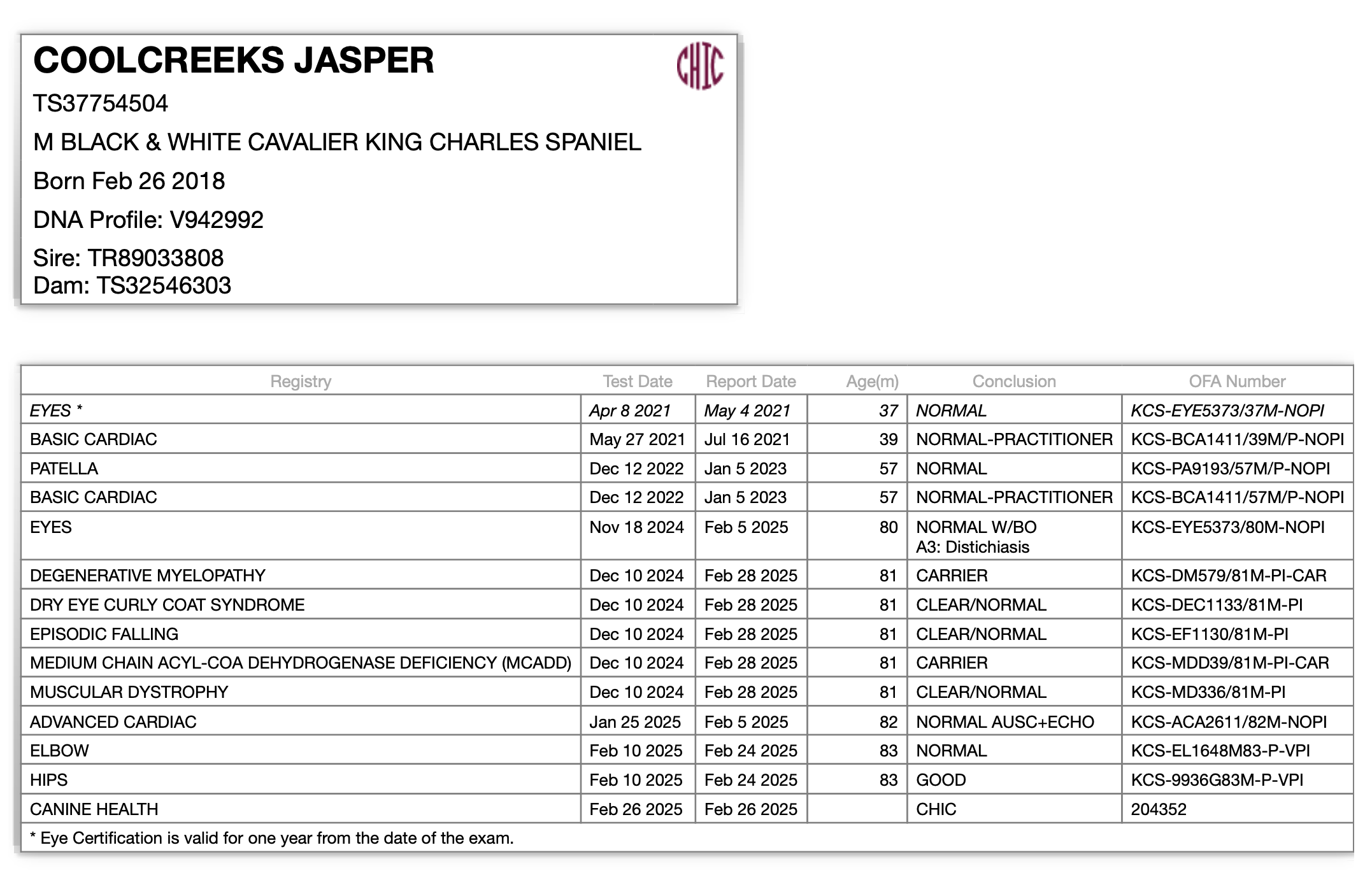
Contact Us
